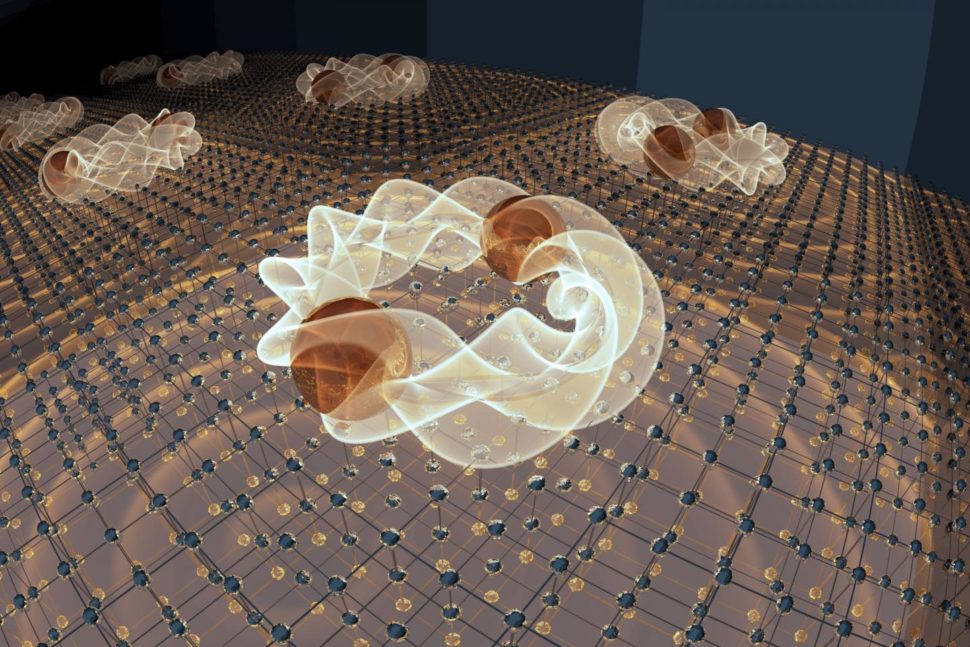Researchers have recently discovered a new spin on the superconductivity phenomenon.
A collaborative team of researchers from the University of Maryland‘s Department of Physics has discovered a rare superconductivity phenomenon that reportedly relies on highly unusual interactions between electrons.
Superconductivity occurs when electrons pair up and flow in an orderly manner through a material. This is often achieved by chilling the material to a temperature well below freezing.
To date, this phenomenon is used mainly in MRI machines and magnetic levitation trains to create strong magnetic fields. However, using superconductivity to augment current electrical systems is still considered an impractical choice as it’s expensive and requires massive equipment.
Read More: Researchers put a new Spin on Superconductivity
According to the new study published in the journal Science Advances, the team reportedly observed effects that are different from anything that has been seen before in relation superconductivity.
Electron interactions in superconductors are governed by a specific quantum property known as spin. Vibrations in an atomic structure help electrons carrying a spin of 1/2 to pair up and flow freely. This is a well-tested theory and is used to describe the behavior of most superconductors today.
However, this recent study unveils evidence for a new type of superconductivity that occurs in a material called YPtBi. This is a kind of superconductivity that appears to come from spin 3/2 particles.
“No one had really thought that this was possible in solid materials. High-spin states in individual atoms are possible, but once you put the atoms together in a solid, these states usually break apart and you end up with spin one-half,” Johnpierre Paglione, a UMD physics professor and senior author on the study, was quoted as saying.
Most superconductors start as good conductors containing lots of mobile electrons. YPtBi lacks these qualities, and so it surprised the researchers to discover that this material was a superconductor.
In theory, YPtBi would require about a thousand times more mobile electrons for it to exhibit superconductivity at temperatures lower than 0.8 Kelvin. Yet, even without mobile electrons, the material becomes superconducting when cooled down to that temperature.
Read More: Existence of New Form of Electronic Matter Confirmed by Researchers
The researchers then took measurements to better understand what was happening. Using a copper coil to detect the changes in the superconductor’s magnetic properties, they mixed the temperature in a small sample of YPtBi while exposing it to a magnetic field over ten times weaker than that of Earth.
Their findings showed that there was an unexpected magnetic intrusion. Apparently, as the material warmed from absolute zero, “the field penetration depth for YPtBi increased linearly instead of exponentially as it would for a conventional superconductor.”
Confusingly, this result, together with other measurements and theoretical calculations the researchers made only shows it’s impossible for the electrons within the new superconducting material to pair up.
The only explanation the researchers could come up with on how YPtBi exhibits superconductivity was that electrons were disguised as particles with higher spin. This is a possibility that no one has considered before in the framework of conventional superconductivity.
“We used to be confined to pairing with spin one-half particles,” Hyunsoo Kim, lead author and a UMD assistant research scientist went on to say. “But if we start considering higher spin, then the landscape of this superconducting research expands and just gets more interesting.”
The researchers also said that there is still a lot to learn about this new superconductor. While it is still in its early stages, having a new superconductivity phenomenon to test and measure is considered a breakthrough in this century-old research study.
“When you have this high-spin pairing, what’s the glue that holds these pairs together?” Paglione said. “There are some ideas of what might be happening, but fundamental questions remain-which makes it even more fascinating.”



















Comments (0)
Least Recent